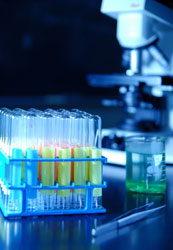Too hot to handle?
Using biological material for a series of applications, whatever they may be, is a broad definition of biotechnology. Over recent years, biotechnology applications have progressed to a high state of precision and scope. Materials ranging from enzymes to whole cells are used for a great number of functions. Hyperthermophiles exhibit a more favourable profile compared to their 'normal-temperature' counterparts. However, production of hyperthermophilic material (such as enzymes and other proteins) on a large scale is still underdeveloped. Therefore, EC-funded project HYPERSOLUTES explored ways to engineer a system for the production of mannosylglycerate, a widely used solute sourced from hyperthermophiles. This was considered to be one of the first key steps towards the wide-scale exploitation of hyper-solutes and their benefits. The role of mannosylglycerate is essentially to stabilise peptide structures in high-temperature environments, therefore protecting the microorganisms from the effects of the heat. However, using mannosylglycerate in an in vitro setting in order to fully characterise its profile has been greatly hampered by the inability to produce this solute in high enough quantities. Project partners devised a new method, whereby mannosylglycerate could be produced using non-hyperthermophilic microbial systems. The genes responsible for the production of mannosylglycerate were isolated and then transfected into Saccharomyces cerevisiae, a commonly used microbial system. The end result was a newly engineered Saccharomyces cerevisiae-based system, which could produce mannosylglycerate in vivo.







